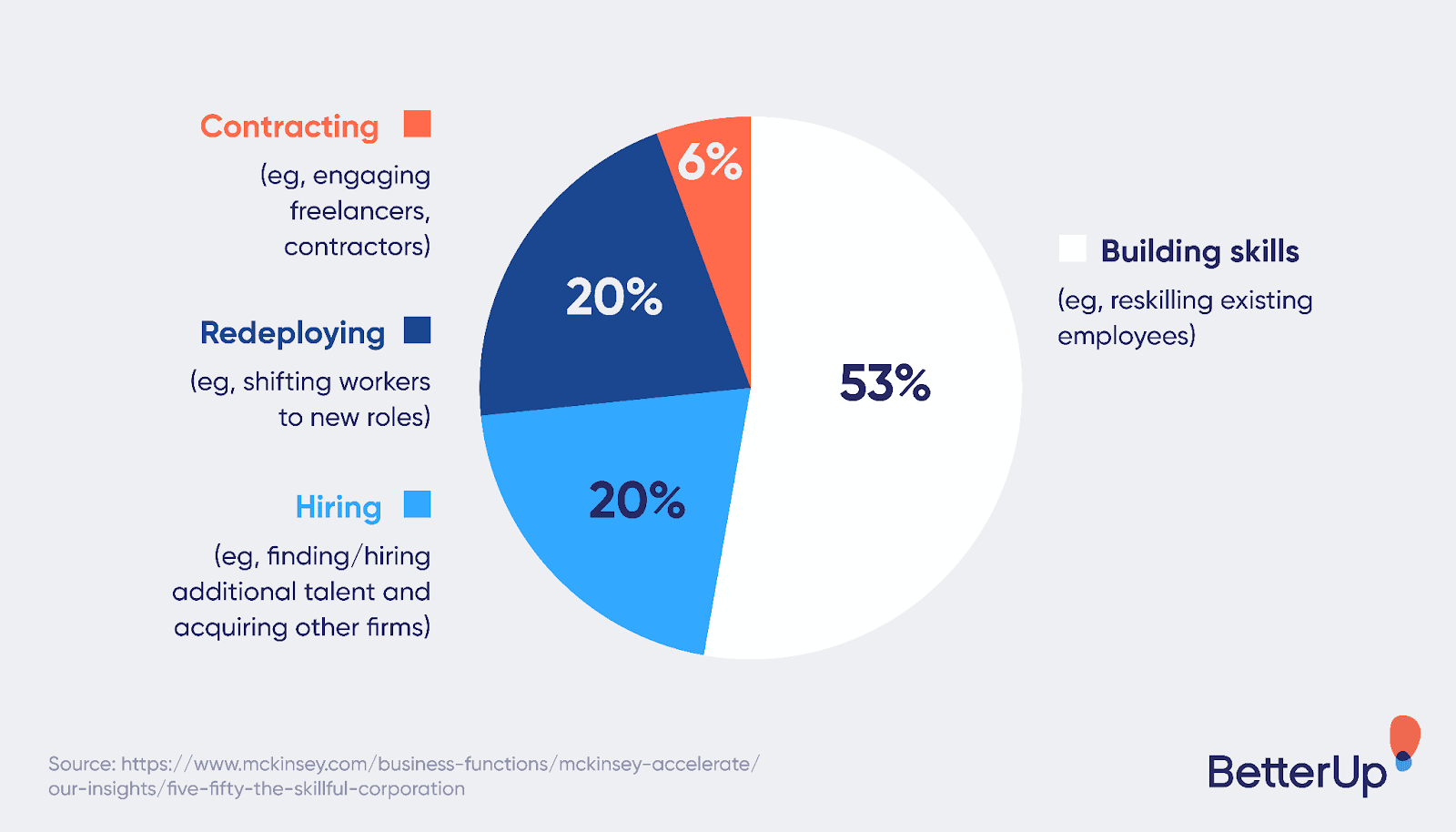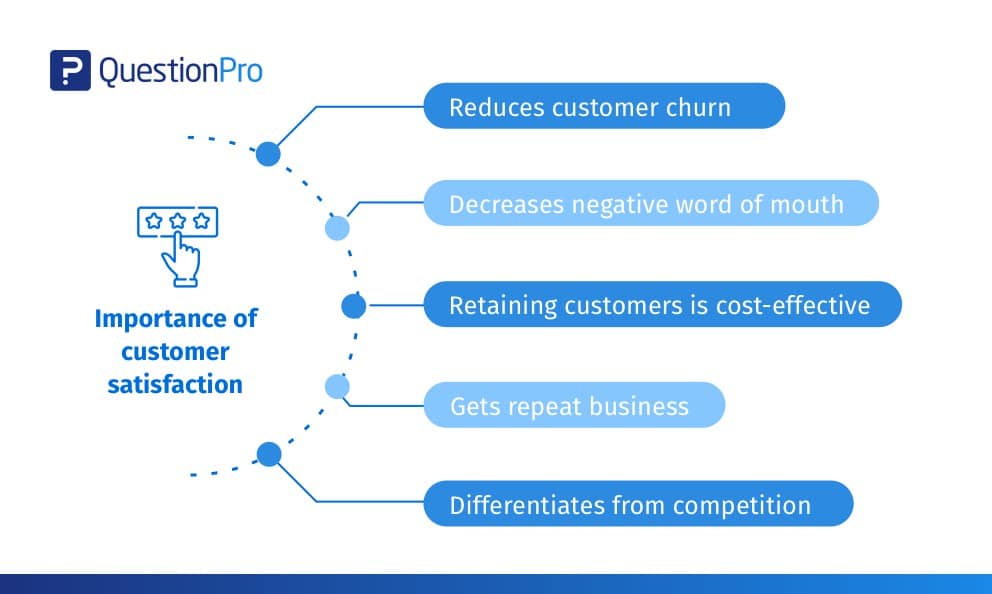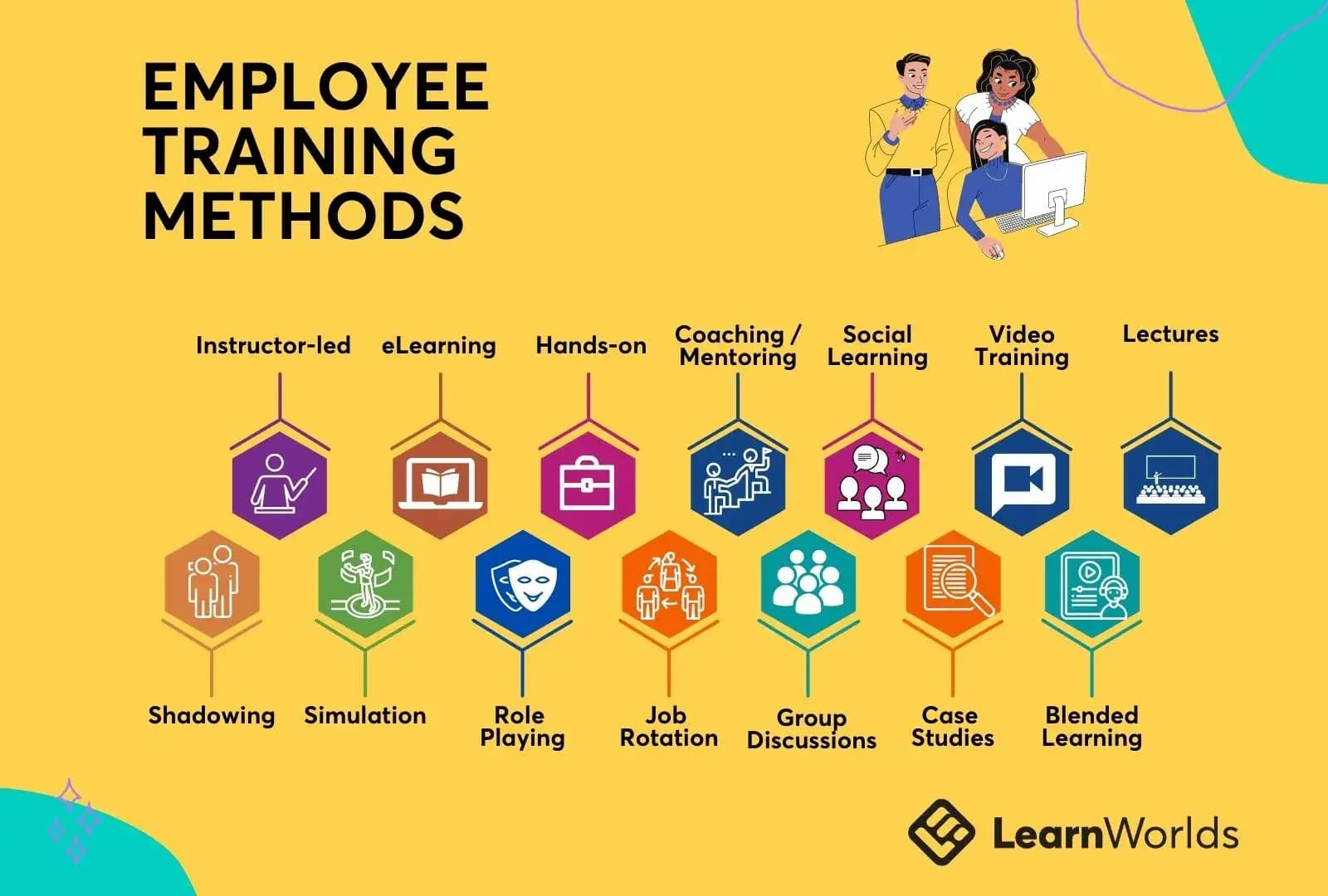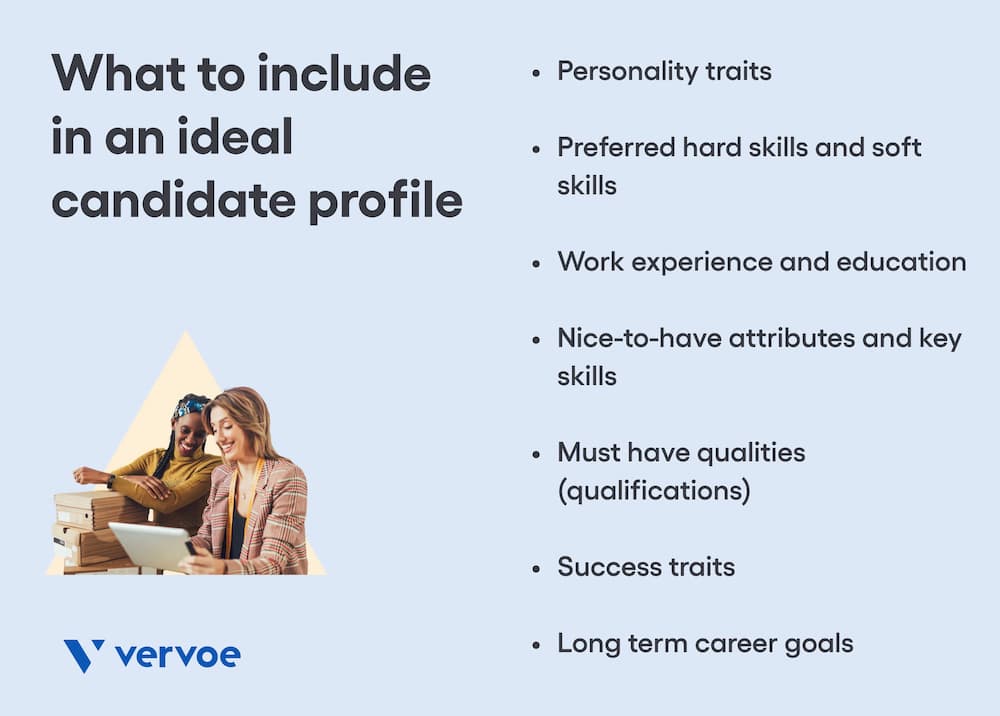One of the biggest threats facing companies today is the lack of requisite skills within the workforce needed to meet rapidly evolving market dynamics. According to a Mckinsey report, 87% of companies worldwide already have considerable skills gaps or will have one within a few years.
A recent World Economic Forum report further reveals that 50% of all employees will require reskilling by 2025, with 40% of current employees’ core skills expected to change in the next five years.
Any e-commerce company looking to improve their sales should prioritize reskilling their employees to help them quickly adapt to the fast-changing economy. This blog explains the steps needed to identify skill gaps and tips for tackling this challenge.
What are skill gaps?
Source:(bettercup.com)
A skills gap is a mismatch between the skills an employer requires and what the employee, job seeker, or present workforce offers.
The e-commerce industry changes rapidly, and new skills are constantly required to keep pace and stay at the top of your game. It’s crucial for e-commerce companies to regularly assess whether they have the skills to meet emerging industry trends and stay competitive in the market.
To accomplish this, it’s imperative to conduct a skills gap analysis to understand areas of potential improvement and growth.
What is a skills gap analysis?
A skills gap analysis is a process that determines the skills an individual or company currently possesses versus those they need in the future to fulfill their business goals. A skills gap analysis can take place on an individual, departmental, or company-wide level, depending on the needs of a company.
The results of the analysis help formulate strategies for employee development, training requirements, and hiring strategies.
Why is it essential to fill these gaps?
If skill gaps go unnoticed or are ignored, they’re likely to result in your business falling behind competitors. The following are some of the benefits of filling skill gaps, especially by retraining or upskilling current employees:
Gaining a competitive advantage: The right skills and knowledge can give you a competitive advantage in the market. If your employees possess relevant skills for today’s world, you will strengthen your company’s position in the market and successfully position your sales team to meet your clients’ future needs.
Increases customer satisfaction: Skilled and efficient employees lead to happy and satisfied customers. Upskilling your workforce ensures they are up to date on industry trends, enabling them to offer the best insights to clients and prospects. Clients are willing to pay top dollar to work with a more knowledgeable, proactive team.
Source:(questionpro.com)
Enhances employee value: Reskilling your employees equips them with more skills to contribute to your company, thereby enhancing their overall value. It also helps increase your worker’s productivity and, as a result, grow your business success to higher levels. Besides, when you invest in retraining your employees, you have a better chance of implementing change quickly, helping you become more competitive in your niche.
Attracting new talent: Millennials want to develop quickly and add value to their career. When you provide upskilling training, you attract prospective candidates with a personal growth mindset, ultimately making you a more attractive employer in the e-commerce industry.
Reduce training and hiring costs: Hiring and training new employees takes a considerable amount of a company’s revenue. An SHRM report reveals it takes 52 days and $4,000 to hire a new employee. Training new employees involves making them familiar with company processes, software, and protocol. Your current employees are already familiar with these things, meaning you won’t need to retrain them from scratch, thus saving you a lot of money.
Keep your top employees: Reskilling means you won’t have to fire loyal and otherwise solid employees for new hires. Talented employees can’t be found easily, and filling their skill gaps ensures you keep them for a more extended period in your company. Training employees to fill new roles assures them of your willingness to invest in their personal development, which is highly valued by employees. The opportunities for professional development also help improve motivation and purpose in your workforce.
What skills should you look for in the e-commerce market?
Before diving into how to identify skills gaps in your company, it’s important to understand the skills that are essential for your industry. There are a number of skills in the e-commerce market that should be covered within teams at your organization in order to increase sales.
Useful e-commerce skills include (but are not limited to):
- Customer experience management: To create positive customer experiences and increase repeat customers.
- Digital marketing: To point potential customers towards your product.
- SEO: To drive traffic to your website.
- Content skills: To generate content that speaks to your customers.
- Data skills: To analyze the performance of your website.
- Legal skills: To ensure that legal issues do not take a chunk of your profits.
- UX skills: To ensure that those visiting your website/app can easily find their way.
- AI/Automation skills: To help scale your business and increase productivity.
Depending on the nature of each e-commerce business, different skills may be applicable. But the main focus of hiring with skills gaps in mind is to continue to add value by creating more capable teams.
Bringing in new employees with different skills can also help to spread those skills throughout your teams when new employees work with other team members. This, in turn, can increase productivity and quality of work, increasing the revenue of the organization.
Upskilling current employees can also serve to increase loyalty to your organization by investing in their personal development. Both hiring new employees and upskilling current talent are common strategies to address skills gaps.
How to identify skill gaps in your company
Now that you’ve considered which skills might be relevant for your e-commerce company, you can begin identifying your own skills gaps. Identifying skill gaps is vital to developing effective and focused training programs. Failure to understand where skill gaps exist in your workforce produces poor training results.
These steps can help you to identify skill gaps in your company:
-
Planning
Failure to plan ultimately leads to poor skill gap analysis. Having a sound plan helps get the entire process off the ground while ensuring you’re looking for the right things. Get started with your planning by:
- Deciding on the scope: Decide whether the skills gap analysis will be done at the individual, team, or company-wide level. The analysis aims to compare each employee’s skills with their current job requirement.
- Setting roles: The next planning step is to set roles for the skill gaps analysis. Decide on who will be the team leader and who the members of the team are.
- Formulating a timeline: Come up with a project timeline, including when and how frequently you will conduct the skills gap analysis.
- Determining your upskilling strategy: It is vital to clearly establish how you will respond to the outcomes of the skills gap analysis, and to do so early. Establishing what you will do with the results of the survey helps prevent delays in reacting to the findings.
-
Identify the required skills
Once you have laid a solid plan, figure out the skills you’re looking for. You can focus on the skills needed at the company level for new projects.
To identify priority skills, you need to conduct extensive research on current and future industry trends. The goal is to determine the skills needed and understand whether your workforce has or needs those skills.
- Measure and audit your current skills
Once you’ve identified and ranked your required skills, the next step is determining whether your company currently has those skills. This requires an extensive engagement with employees of all levels across your company.
Collect information on the skills they currently have, what they need, and how to transfer those skills. Some of the tools to help you measure current skills include:
- Employee surveys
- Skills assessments
- Feedback notes from performance reviews
- Analysis of KPIs for individuals and teams
- Direct interviews with employees
-
Fill in the skills gaps
Now that you’ve identified your skills gaps, you should have a list of skills that are lacking in your team/department/organization. You should also have an idea of how best to address the gaps.
There are two common ways to address skills gaps:
- Training: Training involves taking your existing employees through a defined professional development plan that covers all areas you need to upskill. The HR department can create a personal development plan that meets the needs of all parties.
The company will then provide the resources needed to train the employees. Upskilling may come in several forms, including external training courses, online courses, mentorship programs, certifications, or conferences.
Source:(learnworlds.com)
- Hiring: If the skills gap is too large to be addressed with training, you may consider fresh hiring. When hiring to fill a specific skills gap, modify the recruitment process for the specific skill you’re looking for.
You should also create specific job requirements and requisitioning for those skills. During the interview process, conduct in-depth skills testing to guarantee the potential candidate is at the level you need.
6 Steps to hiring the right candidate to fill skill gaps
If you need to hire to fill a skills gap, there are a number of recruiting practices used by best-in-class companies to net highly talented and skilled employees:
-
Define your ideal candidate
Source:(vervoe.com)
Create a profile of the ideal candidate for the job roles you’re recruiting. Think of this like a buyer persona, but instead, it’s a persona of the new team member that you’d like to find. This helps your hiring team understand what they are looking for when going through applications and conducting interviews.
Knowing your ideal candidate helps you tailor your recruitment process accordingly.
-
Look beyond traditional sources
Top talent doesn’t necessarily go to hiring managers anymore. You need to go out and find them.
If you want to get highly talented salespersons, look no further than social networks and talent communities. Using these tools is not only simple but very cost-effective. A recent Way to Work survey reveals Facebook, Twitter, and LinkedIn are the top social media platforms potential candidates use to research the culture of a potential employer.
Consider creating Twitter cards and specific hashtags to reach college-aged students. To reach out to young professionals, post steady content on LinkedIn to showcase your office culture and company thought leadership.
-
Leverage referral bonus programs
One way to get highly skilled and loyal employees is by leveraging an employee referral program. Existing employees know your company better and are likely to know and recommend talent from their own networks who they believe are a good fit for the company.
-
Recruit early
Work with targeted colleges and universities depending on your needed specialization to get in front of younger talent sooner.
Help students understand the skills and experiences the market needs besides their education. You can also get your subject matter experts spots as guest lecturers or adjunct instructors to put your company name in front of the top talent early enough.
-
Build a skills-based intern program
Design internship programs that expose candidates to several aspects of your company’s operations. Allow the interns to handle actual projects while being supervised and give feedback. As you train the interns, ensure you communicate clearly the skills you need.
-
Focus on your employer brand
Help candidates find their way to your job posting by giving your employer brand a boost. This can mean optimizing your career site, leveraging employee testimonials, creating hiring campaigns, communicating your brand values in your job ads, and more.
Conclusion
The required skill sets for e-commerce jobs are constantly evolving. That’s why it’s vital for your company to familiarize itself with current and future skills gaps.
By improving your current teams, better e-commerce sales will follow. If you ignore the skills needed to stay competitive, you risk being left behind by competitors. By addressing your skills gap head-on, you will be more informed and prepared to focus on the areas you need to invest in training and sourcing new talent. This is key to future-proofing your workforce to ensure a greater return on your team’s efforts.
Author
Rebecca is Recruitee’s US Content Marketer. Her goal is to educate and entertain HR and recruitment professionals with content on the latest topics disrupting the industry.









